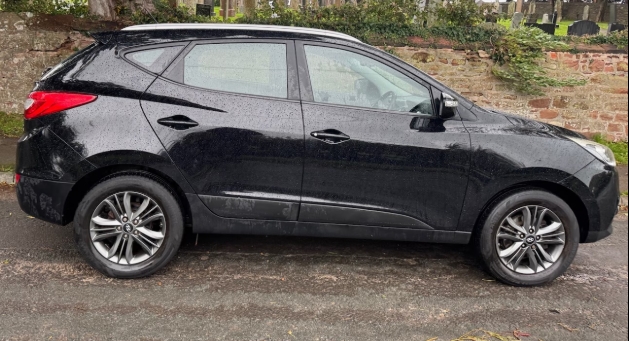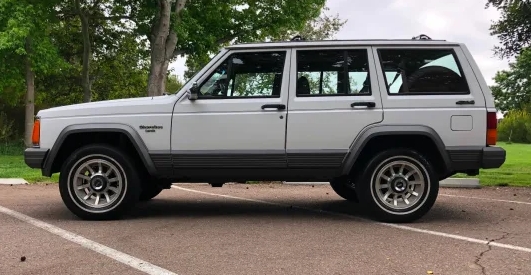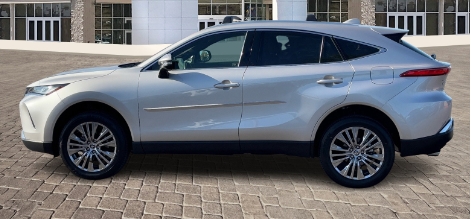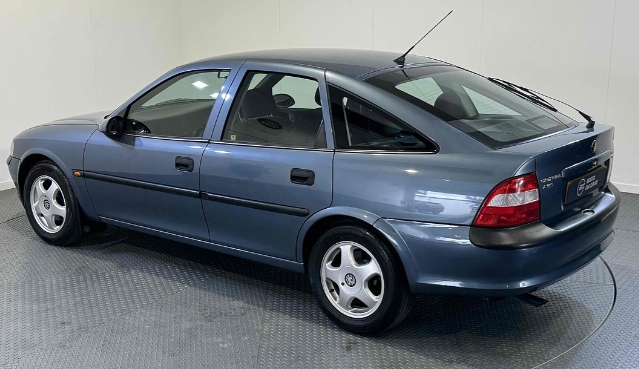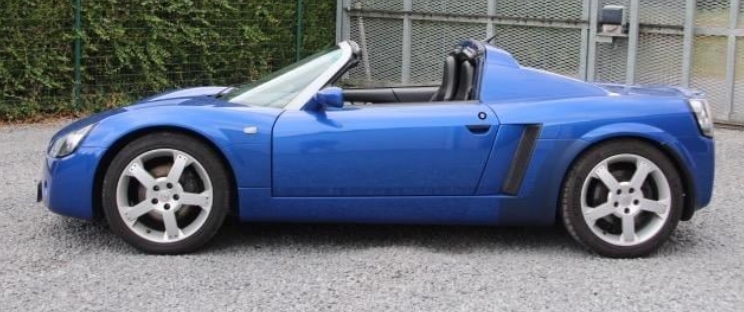The Rise of the Crossover Icon: A Deep Dive into the Evolution of the Hyundai ix35
The modern automotive landscape is defined by the ubiquitous crossover, a vehicle that artfully blends the practicality of an SUV with the driving dynamics of a car. Among the pioneers and persistent players in this segment, the Hyundai ix35 carved out a significant niche, evolving from its predecessor into a stylish, well-equipped, and ultimately successful global model. For those who appreciate automotive history and the subtle shifts in design and technology that define vehicle generations, the ix35’s journey is a compelling one.
Genesis and the Shadow of its Predecessor: The Hyundai Tucson (First Generation, 2004-2009)
To understand the ix35, we must first acknowledge its lineage. The ix35 was, in essence, the second generation of the Hyundai Tucson. The first-generation Tucson, launched in 2004, was Hyundai’s initial foray into the compact SUV segment. While it offered decent value and ruggedness, its styling was somewhat uninspired, and its driving experience leaned more towards the truck-like characteristics of its underpinnings (shared with the Hyundai Santa Fe). It was a functional vehicle, but lacked the contemporary flair that would soon come to define its successor.
A Bold New Identity: The Hyundai ix35 Arrives (2009-2015)
The year 2009 marked a pivotal moment for Hyundai and the compact crossover. The Tucson was completely redesigned and rebranded as the Hyundai ix35 in most global markets, a name that would stick for its entire lifespan. This wasn’t just a cosmetic facelift; it was a wholesale reinvention. The ix35 was a dramatic departure from its predecessor, shedding the boxy, utilitarian aesthetic for fluid, dynamic lines that embodied Hyundai’s new “Fluidic Sculpture” design language.
This new design language, spearheaded by former Audi designer Thomas Bürkle, was a breath of fresh air. The ix35 featured a swept-back silhouette, a prominent hexagonal grille, sharp character lines, and a surprisingly sophisticated overall presence for a vehicle in its class and price point. It successfully projected an image of modernity and premium aspiration, proving that affordable could also be attractive.
Platform and Powertrains: A Foundation of Competence
Underneath the stylish exterior, the ix35 was built on a robust platform, sharing its underpinnings with the Kia Sportage of the same era. This provided a solid and capable foundation, offering a good balance between ride comfort and handling.
The engine lineup varied significantly across different markets, but commonly included a range of efficient and reliable gasoline and diesel options.
- Gasoline Engines:
- 1.6 GDI: A naturally aspirated direct-injection engine, often found in entry-level models, offering a good blend of economy and performance for urban driving.
- 2.0 MPi: A more traditional multi-point injection 2.0-liter engine, providing a bit more power and torque, suitable for a wider range of driving conditions.
- 2.4 GDI: A larger displacement naturally aspirated engine, offering the most power in the gasoline lineup, typically reserved for higher trim levels or specific markets.
- Diesel Engines:
- 1.7 CRDi: A smaller, fuel-efficient diesel engine, popular in European markets, offering excellent miles per gallon.
- 2.0 CRDi: A more powerful and torquey diesel engine, available in different power outputs (e.g., 136 PS or 184 PS), ideal for those who frequently carry loads or drive on highways.
Transmission choices typically included a 5-speed or 6-speed manual transmission, and a 5-speed or 6-speed automatic transmission, depending on the engine and market. All-wheel drive (AWD) was generally an option, particularly on higher-spec models, enhancing traction and capability in adverse weather conditions.
.
RepairSurge Online Repair Manuals Replace Bulky Books With Reliable Digital Information!
Faster And Cheaper Than Traditional Printed Manuals, Users Get Instant Access To The Repair Information They Need For Any Car, Truck, Van or SUV:
.
Trim Levels and Features: Catering to Diverse Needs
Hyundai is renowned for offering a compelling value proposition, and the ix35 was no exception. Across its production run, various trim levels were offered, progressively adding more features and creature comforts. While specific nomenclature could vary slightly by region, common trim levels included:
- Entry-Level/Standard: Typically featured essential amenities such as power windows and locks, air conditioning, a basic audio system with USB and auxiliary inputs, and safety features like multiple airbags and ABS.
- SE/Comfort: This mid-range trim usually added alloy wheels, upgraded interior fabrics, cruise control, steering wheel-mounted audio controls, and often more sophisticated infotainment systems with Bluetooth connectivity.
- Premium/Elite/Style: The top-tier trims elevated the ix35 experience with features like leather upholstery, heated seats (front and rear), a panoramic sunroof, a premium audio system, satellite navigation, keyless entry and start, automatic climate control, and advanced safety aids like parking sensors and a rearview camera.
Throughout its lifecycle, Hyundai consistently updated the ix35’s features and technology. Early models might have had more basic infotainment screens, while later models benefited from larger touchscreens, improved connectivity (like Apple CarPlay and Android Auto in some later iterations, though this was more prevalent in the subsequent Tucson generation), and more advanced driver assistance systems.
The Mid-Cycle Refresh: Evolution and Refinement (circa 2013)
Like most automotive models, the ix35 received a mid-cycle refresh to keep it competitive in a rapidly evolving segment. This update, typically introduced around 2013, brought subtle but significant enhancements.
- Exterior Tweaks: The refresh usually involved minor styling revisions to the front and rear fascias. This might include redesigned headlights, updated fog lights, a revised grille pattern, and new alloy wheel designs. These changes aimed to keep the ix35 looking fresh and modern.
- Interior Enhancements: The interior also saw improvements, often focusing on material quality, ergonomics, and updated technology. This could include a revised dashboard layout, better-sounding audio systems, and the introduction of newer infotainment features.
- Powertrain Improvements: Hyundai also capitalized on this refresh to introduce more fuel-efficient powertrains and potentially subtle performance upgrades. For instance, the 2.0-liter diesel engine might have received a power boost or improved emissions control.
Safety: A Growing Priority
From its inception, safety was a cornerstone of the ix35’s appeal. It consistently performed well in various safety tests, earning respectable ratings from organizations like Euro NCAP and the NHTSA. Standard safety equipment typically included:
- Multiple airbags (front, side, curtain)
- Anti-lock Braking System (ABS)
- Electronic Stability Control (ESC)
- Traction Control System (TCS)
- Hill-start Assist Control (HAC)
- Downhill Brake Control (DBC)
As the ix35 evolved, and as safety technologies advanced, later models saw the introduction of more sophisticated driver assistance systems, although these were more commonly found on the top-tier trims. These could include:
- Rear parking sensors
- Reversing camera
- Blind-spot monitoring (less common on early models)
- Lane departure warning (even less common on early models)
Global Appeal and Market Performance
The Hyundai ix35 was a genuine global product, sold in numerous countries across North America, Europe, Asia, Australia, and beyond. Its success was driven by a combination of factors:
- Compelling Design: The “Fluidic Sculpture” design language resonated with a wide audience, making the ix35 stand out in a crowded segment.
- Value for Money: Hyundai’s reputation for offering a lot of car for the money was further solidified with the ix35. It provided a feature-rich package at a competitive price point.
- Reliability: Hyundai vehicles are generally known for their reliability, and the ix35 built upon this reputation, offering owners peace of mind.
- Practicality: The crossover format offered excellent practicality, with a spacious interior, a versatile cargo area, and the option of all-wheel drive for added capability.
- Warranty: Hyundai’s industry-leading warranty, particularly in markets like North America and Europe, further enhanced the ix35’s attractiveness.
The ix35 played a crucial role in Hyundai’s ascent to becoming a major global automotive player. It successfully competed against established rivals and helped to shift perceptions of the Hyundai brand towards quality, design, and innovation.
The End of an Era and the Dawn of the Tucson’s Return (2015)
In 2015, the ix35’s chapter came to a close as Hyundai rebranded its compact crossover back to the Tucson nameplate globally. This decision aimed to unify its product offerings under a single, recognizable name and to leverage the established heritage of the Tucson name. The third-generation Tucson, launched in 2015, continued to build upon the foundations laid by the ix35, offering an even more refined design, advanced technology, and a wider array of powertrain options.
Legacy of the ix35
The Hyundai ix35, produced from 2009 to 2015, stands as a significant milestone in Hyundai’s evolution. It was a vehicle that dared to be different, embracing a bold new design language and proving that stylish, well-equipped, and affordable could go hand-in-hand. It successfully transitioned Hyundai into the modern crossover era, appealing to a broad demographic with its blend of practicality, technology, and eye-catching aesthetics. The ix35 wasn’t just a successor to the Tucson; it was a bold statement of intent from Hyundai, a statement that resonated with buyers worldwide and helped pave the way for the continued success of the Tucson nameplate in the years that followed. Its journey embodies the rapid maturation of not only a single model but also of a brand that has consistently pushed boundaries and redefined expectations in the automotive industry.
